Best breakfast ideas for people with diabetes
Considering all the health benefits that come with eating breakfast, you’d think it would be mandatory. It practically is for people with diabetes, who need to keep close tabs on their blood sugar levels. Here are nine must-follow breakfast rules for people with diabetes.

Don’t skip it
Why is breakfast such a must? “People with diabetes have fluctuations in blood sugar that can be more stable when they spread their food throughout the day,” says Melissa Joy Dobbins, RD, a Chicago-based registered dietitian, certified diabetes care and education specialist, and spokesperson for the Association of Diabetes Care & Education Specialists. “Skipping meals such as breakfast can lead to overeating later in the day due to hunger and low blood sugar levels.”
In fact, a study published in a 2015 issue of Public Health Nutrition found that adults with type 2 diabetes who ate breakfast noshed less throughout the day. Aim to eat breakfast at the same time every morning to help keep your blood sugar levels even throughout the day.

Be sure it includes protein
Plenty of research, including a study published in 2015 in The Journal of Nutrition, shows that eating a high-protein breakfast can help people with type 2 diabetes avoid post-meal blood sugar spikes. And it isn’t just the protein that’s taking care of business.
“Most people don’t realize that the partner that comes along with most sources of protein is fat,” says Melinda Maryniuk, RDN, a registered dietitian nutritionist, certified diabetes care and education specialist, and owner of Diabetes & Nutrition Consultants in Boston. “They help keep your blood sugar steady and keep you feeling full until the next meal, so you don’t have the ‘hangries’ by 11 a.m.”
Aim for at least 5 grams of protein at breakfast, suggests Maryniuk. That’s about the amount in one small egg, two-thirds cup of milk, or 1.5 tablespoons of peanut butter. “Then there are things I call ‘protein boosters.’ Adding a sprinkle of nuts to oatmeal, toasted sunflower seeds on yogurt, or chia seeds to overnight oats boost the protein.”
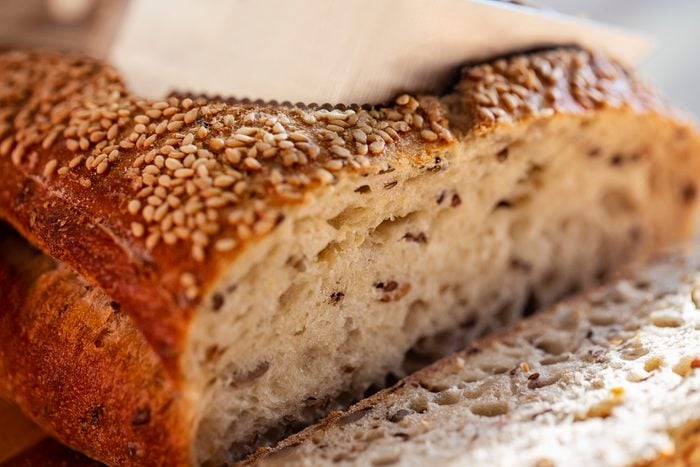
Skip the refined carbs
Whether you’re trying to lose weight or simply balance your blood sugar, carbohydrates play a big role. But not all carbs are created equal. Avoid highly processed refined carbs—like those in white bread and some cereals—since they tend to cause spikes in blood sugar. Instead, choose whole, minimally processed foods such as fruits and whole grains. A review of studies, published in 2018 in the journal Nutrients, shows that a diet rich in whole grains can help prevent and treat type 2 diabetes.

Pick diabetes-friendly foods off the menu
Diner-style breakfasts can include 1,000 calories or more with astronomical amounts of carbohydrates and fat if you’re not careful. But that doesn’t mean you should avoid eating breakfast out. The most important thing to keep in mind if you have diabetes: Aim for a certain amount of carbs and pair that with a lean protein and heart-healthy fats.
“There are a variety of choices when dining out for breakfast, and some are healthier than others,” says Dobbins. “For people with diabetes, eating a balanced meal—a combination of carb, protein, and fat—can easily be accomplished. Choose something like a breakfast sandwich with lean meat on an English muffin, instead of a higher-fat biscuit, or a Greek yogurt parfait with fruit and nuts.”
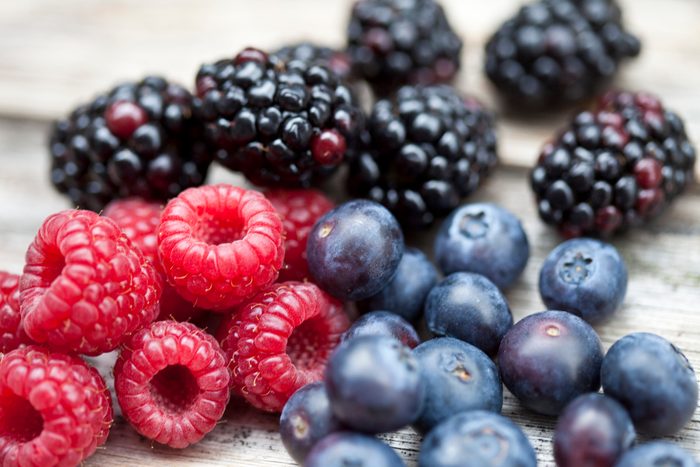
Get plenty of fiber
A review of studies published in 2019 in The Lancet found that eating a fiber-rich diet reduces the incidence of type 2 diabetes, as well as coronary heart disease, stroke, and colorectal cancer by 16 to 24 percent. Make that bowl of cereal diabetes-friendly by adding half a cup (one serving) of fresh fruit, such as raspberries or blueberries. And while you’re at it, sprinkle 1-2 tablespoons of ground flaxseed on top. A study published in a 2016 issue of Current Pharmaceutical Design suggests that these fiber-rich seeds may help reduce the incidence of type 1 diabetes and delay the onset of type 2.
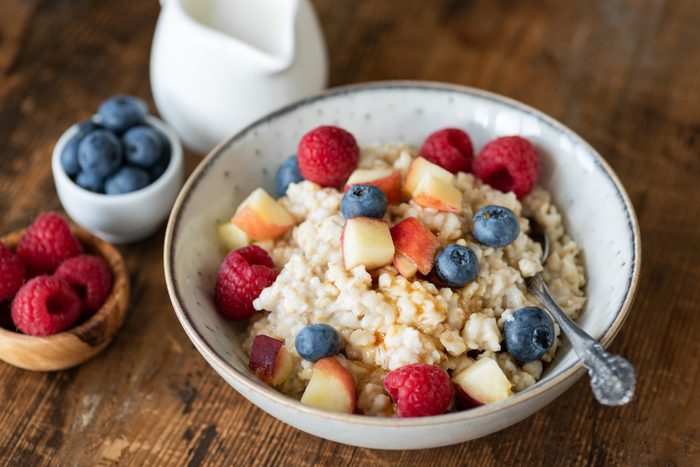
Eat oatmeal
Oatmeal is one of the most diabetes-friendly breakfasts you can eat. It contains 4 grams of fiber per cup, which helps keep blood sugar levels steady in people with type 2 diabetes, suggests research, including a study published in 2015 in Nutrients.
Skip the instant flavored oatmeal, which usually contains added sugar and salt, and uses more-processed oats. Opt for steel-cut oats, instead. To save time (steel-cut oatmeal takes up to 50 minutes to cook), make a large batch on Sunday mornings. Enjoy one serving, and then refrigerate the rest. On weekday mornings, simply reheat in the microwave. Add raisins and cinnamon if you like.
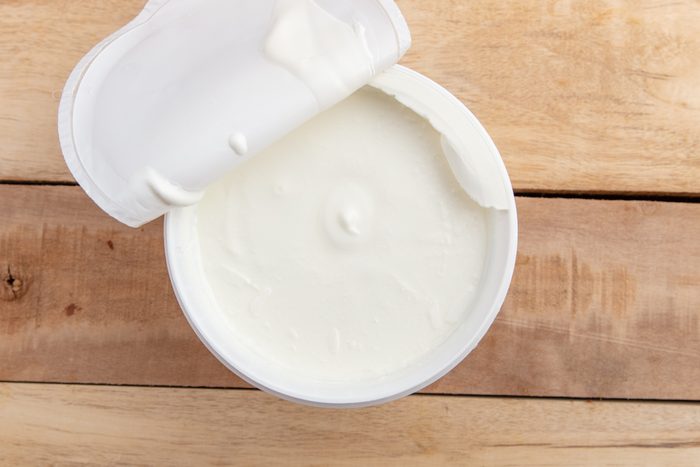
Have nonfat milk or yogurt
When researchers studied almost 170,000 adults ages 40-69, they found that the more milk participants consumed, the less likely they were to have metabolic syndrome, a cluster of symptoms that increases your risk for diabetes and heart disease (their findings were published in a 2017 issue of the journal Nutrients).
Vitamin D, which is used to fortify milk, also helps the body use insulin, suggests a study published in 2018 in Clinical Diabetes. If you prefer to get your dairy from a yogurt container, skip the flavored variety and choose plain, instead. You’ll save around 11 grams of carbohydrate this way.

Think outside the (cereal) box
If you don’t like typical breakfast fare, then build the morning meal around foods you do like. “Leftovers from the night before? That can be breakfast. A protein bar or meal replacement shake? That can be breakfast, too,” says Maryniuk. “Just aim to have at least 15 grams of carb and at least five grams of a good source of protein and you’re good to go.”
Maryniuk’s other nontraditional breakfast ideas include peanut butter and sliced apples or bananas on a whole wheat English muffin, mashed avocado on a slice of sprouted grain bread with a sprinkle of feta cheese, a high-protein smoothie made with yogurt or cottage cheese and berries, and melted cheese in a tortilla with sliced avocado.
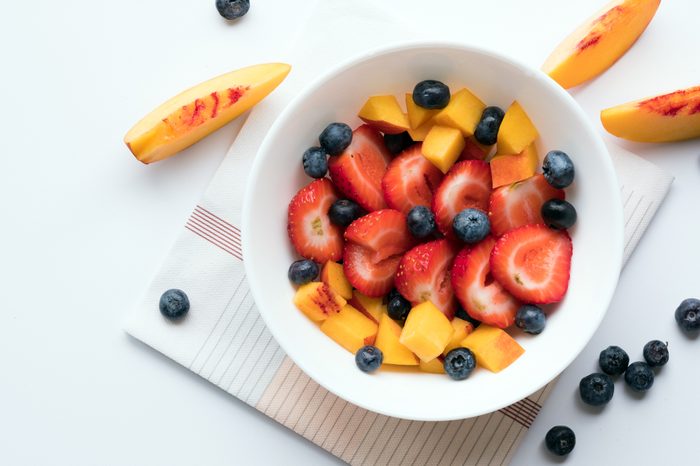
Opt for fruit instead of fruit juice
Juice is a source of concentrated carbs and it lacks the fiber of the fruit it came from. Plus, says Maryniuk, “whole fruit eaten in the morning is digested a bit more slowly than juice and contributes to less of a spike in your blood glucose.”
But if you’re a diehard juice drinker—or maybe your blood sugars post-breakfast are higher than your target—”see if you can reduce your portion by half,” suggests Maryniuk. “Or dilute it with water.” Next, learn what else you can eat on a type 2 diabetes diet.
